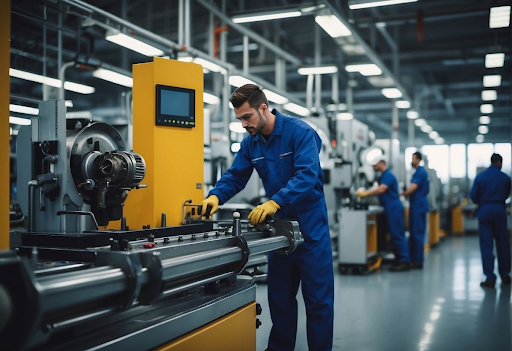Manufacturing relies on precision, timing, and smooth operations. Every component of a production line serves a purpose, but some often go unnoticed despite their impact. One such piece is the flux belt. It may not grab attention like the machines it supports, but its role in enhancing efficiency is undeniable. In today’s fast-paced industrial world, minor adjustments in equipment can bring significant gains. Understanding how a flux belt fits into the bigger picture of production can shed light on how manufacturers keep pace with rising demand and shrinking deadlines.
Increasing Output With a Reliable Flux Belt
A flux belt is a conveyor system component used primarily in soldering operations during electronics manufacturing. It helps carry circuit boards through a wave soldering machine while maintaining proper alignment and flow. Its strength lies in its reliability and resistance to high temperatures.
When production lines run continuously, any delay can lead to significant financial loss. A flux belt improves consistency by ensuring components are held securely and move smoothly through each phase. There’s no sudden stopping or misalignment. This seamless movement reduces the need for manual correction and increases total output over time.
Reducing Downtime Through Improved Material Handling
Material handling is one of the trickiest parts of manufacturing. Breakdowns in transport lines cause ripple effects across the entire facility. With a high-quality flux belt in place, those risks decrease.
Designed for durability and minimal friction, these belts reduce the wear-and-tear seen in traditional systems. They are built to endure the pressures of constant movement, sharp temperature shifts, and repeated exposure to chemicals used in the soldering process. Fewer maintenance interruptions lead to more hours of uninterrupted production.
Enhancing Safety Standards With Flux Belt Integration
The flux belt not only improves performance but also plays a part in enhancing workplace safety. In manufacturing environments where heat and chemicals are common, safety is a serious concern.
A belt that holds components firmly and guides them through hazardous areas prevents accidents. Workers spend less time close to heat zones because the belt ensures precision on its own. Over time, this reduces exposure risks and helps companies meet strict regulatory standards. In this way, the flux belt contributes quietly but meaningfully to a safer workspace.
Maximizing Accuracy With Flux Belt Stability
Precision is everything in manufacturing. Whether it’s placing a microchip or fitting a joint, accuracy affects quality. A stable flux belt contributes to precision by preventing even the smallest shifts during movement.
It’s easy to overlook how much movement can impact results. But when a circuit board moves just a fraction of an inch at the wrong moment, soldering points may miss their targets. With flux belt support, that margin of error disappears.
Installing Garden Room Extensions to Expand Functional Living
In the same spirit of improving workflow and creating efficiency, garden room extensions give homeowners extra space without the hassle of a full home renovation. These installations bring natural light, comfort, and flexibility.
Whether used for work, relaxation, or entertaining, a well-designed garden room functions like a high-performing component—enhancing the flow and purpose of a property.
Conclusion
Efficiency in manufacturing isn’t built on machines alone. It’s the result of carefully chosen components working together in harmony. The flux belt may be a small part of the process, but its influence runs deep—from improving safety and reducing downtime to ensuring accuracy and speed. When you consider how this unassuming element helps entire operations run more smoothly, it’s easy to appreciate its value.




